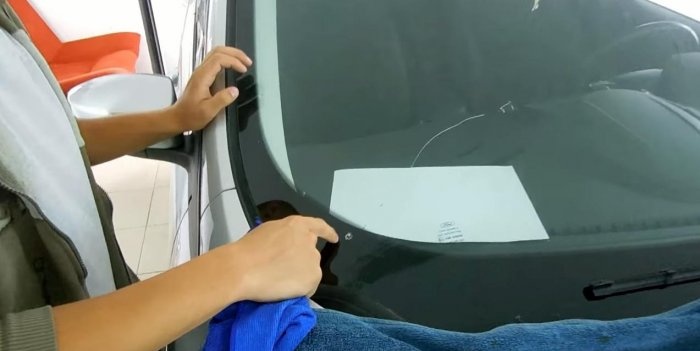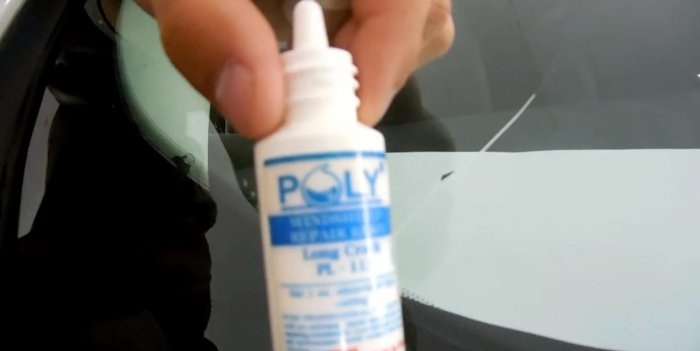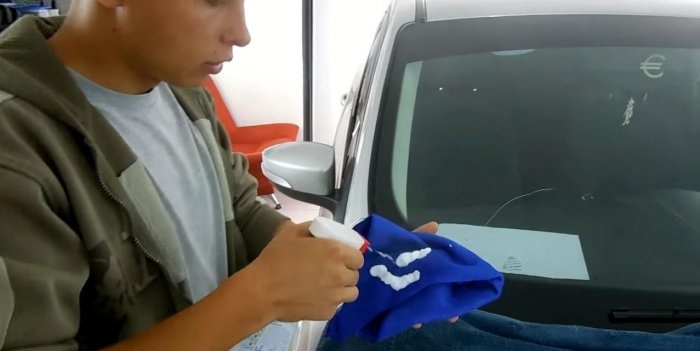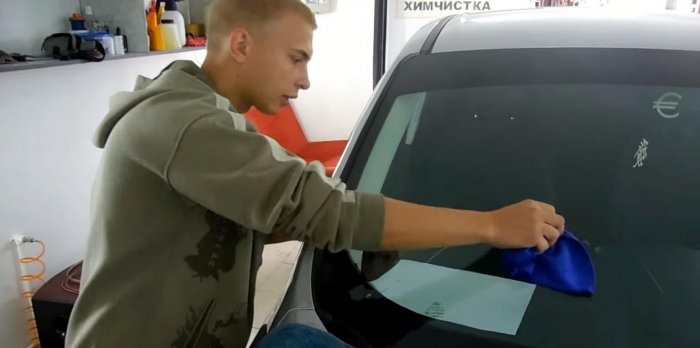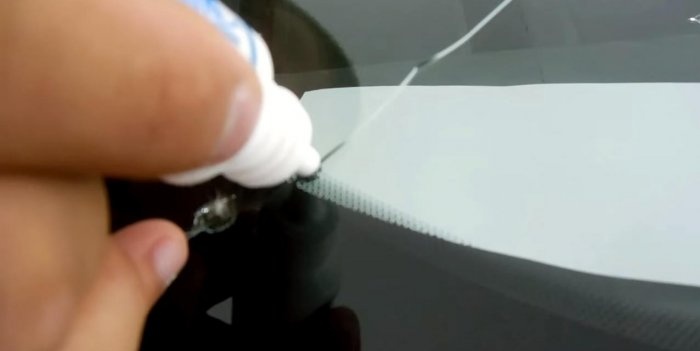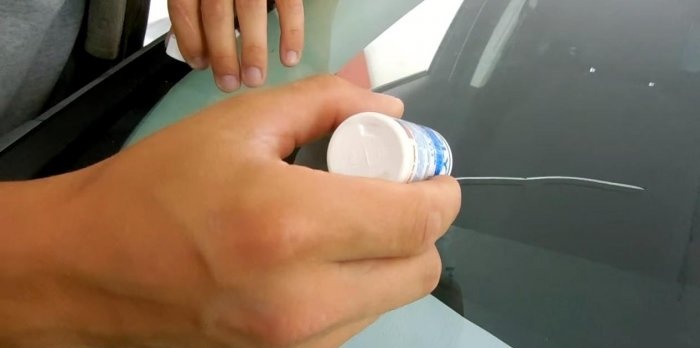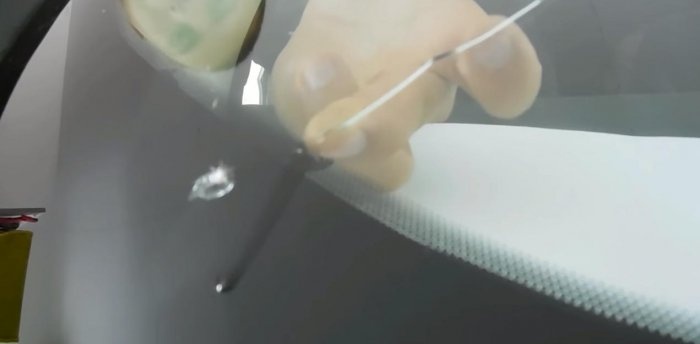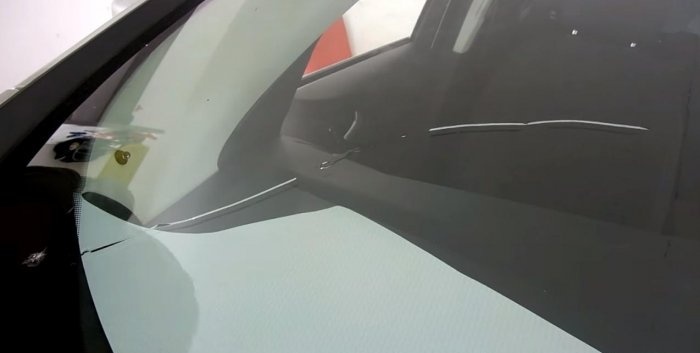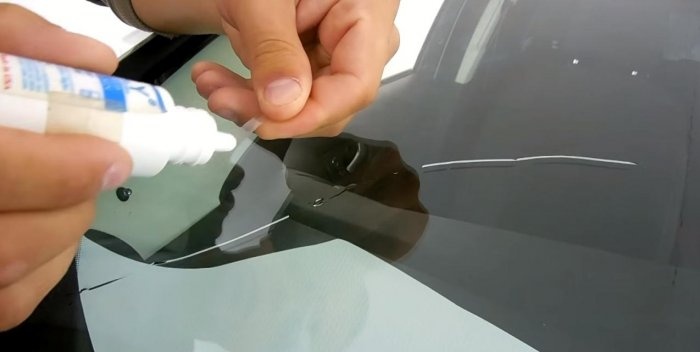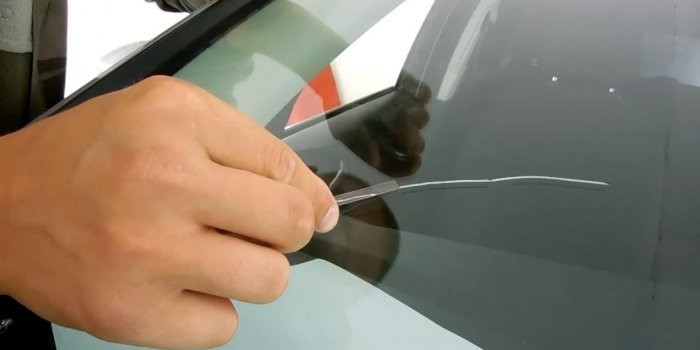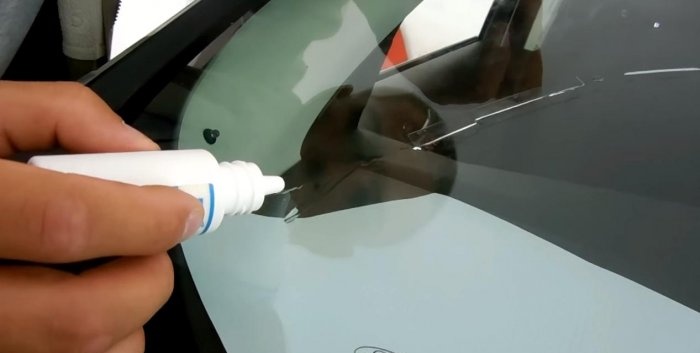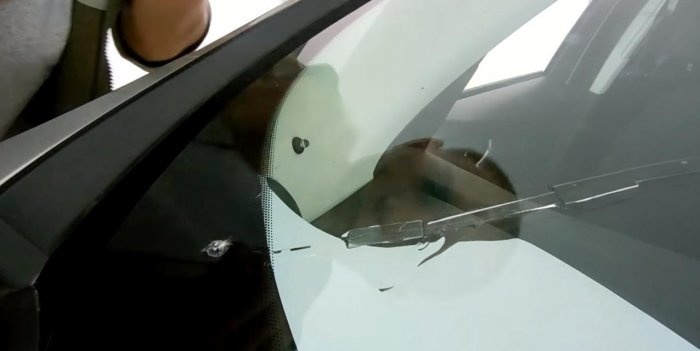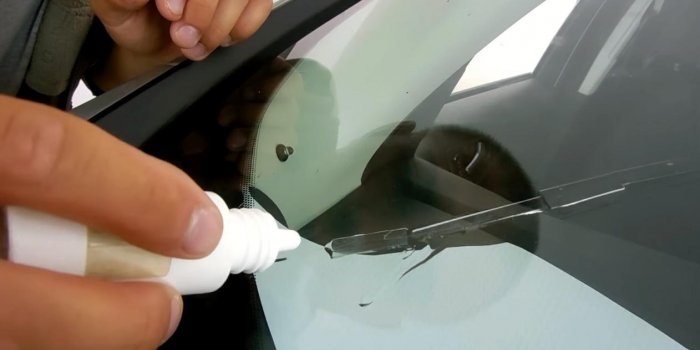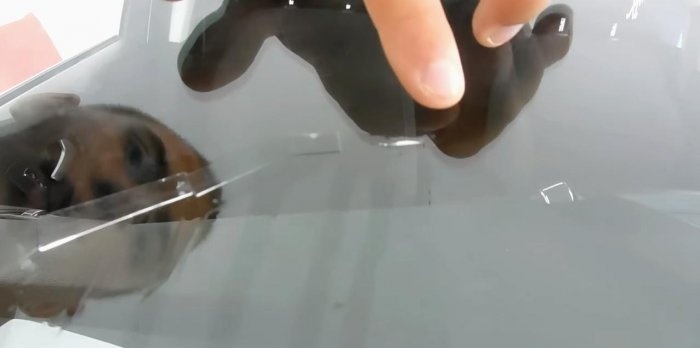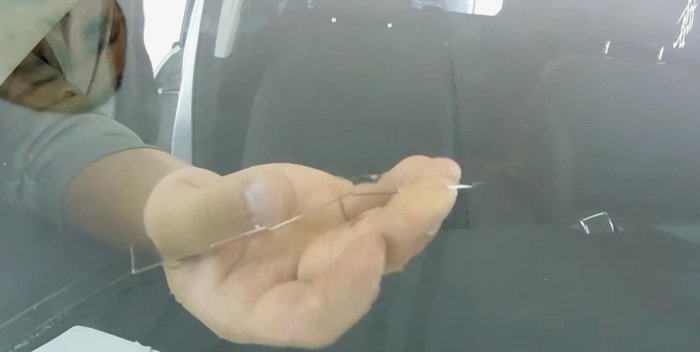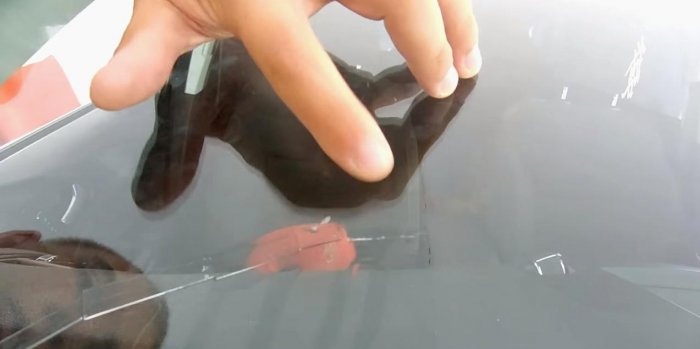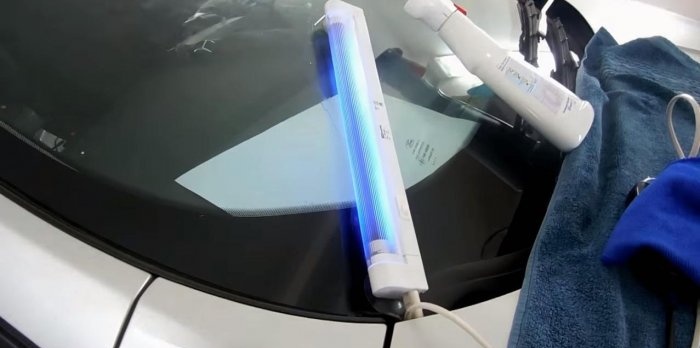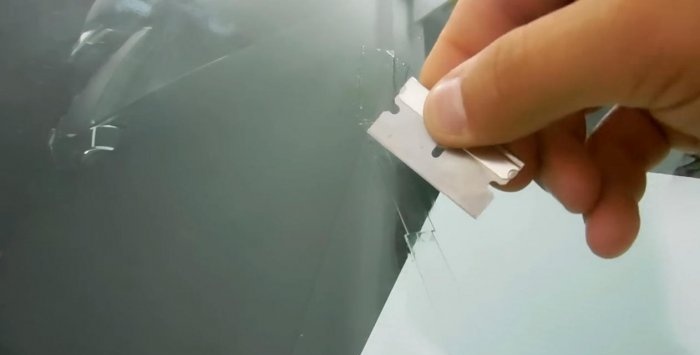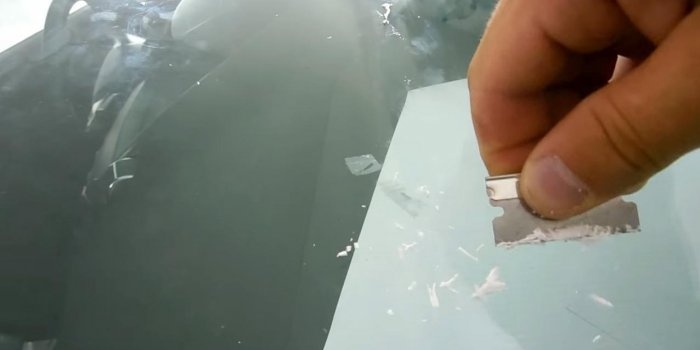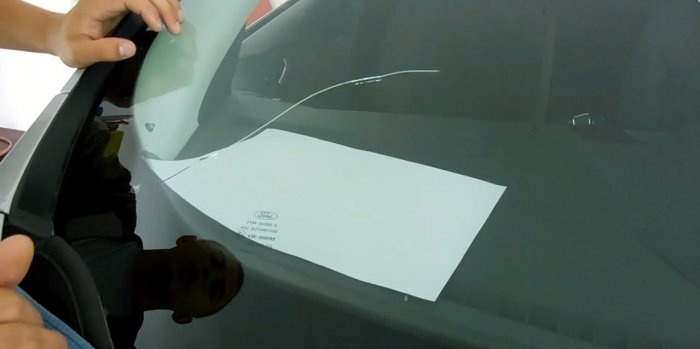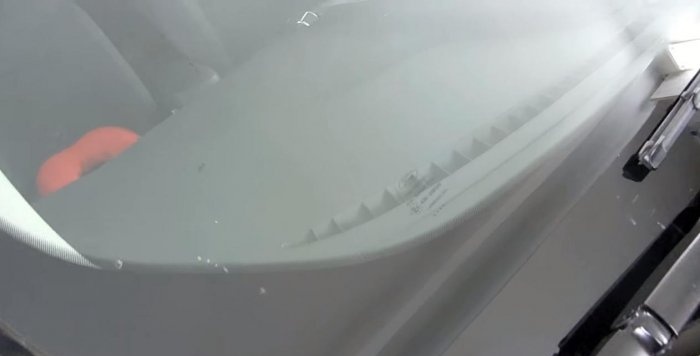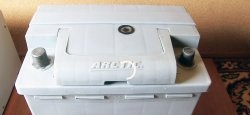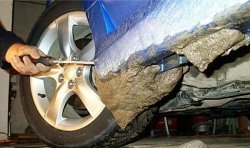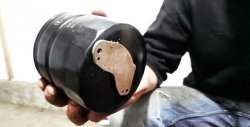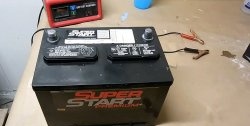How to repair a crack in a car windshield
Damage to car windshields includes cracks, chips and even holes. Sometimes this happens due to the fault of the air conditioner being turned on in a heated car, as a result of a temperature change. But more often than others, mechanical damage occurs from being hit by stones while an oncoming car passes. How to cope with this problem and can you do it yourself?
Today, on Chinese sites you can find ready-made kits for eliminating defects on glass. Their quality does not always correspond to what is declared, although they cost an order of magnitude cheaper and are sold in whole sets with tools. A better and more lasting effect is provided by branded polymers for cracks in auto glass, such as Pit Filler, Long Crack or Delta Kits. In most cases, the problem can be solved, but such restoration must be applied wisely. Let's see what the professionals advise on this matter.
Materials:
Tools for auto glass restoration:
Before you start repairing defects on the glass, it is necessary to diagnose them. The best solution would be to contact a professional technician for advice on whether it is worth starting this business at all or whether it is better to purchase a new windshield and not spend money on expensive polymers and tools.
All factory branded windshields are made of triplex and are marked L or WL. Their main damages are as follows:
Only a professional craftsman, having analyzed the defect, can confidently say how much the crack will be repaired, what will remain visible and how much material will be needed for the work.
The defect, using the example of which we will look at glass restoration today, is a combined one and quite common. In the lower right corner there is an impact point, and as a result, a “horseshoe” or “bull’s eye” gouge. A one-sided crack extends from it. Before the main work, a set of measures was taken to stop it at the extreme point. The hole was drilled with a drill and filled with a special injector under pressure.
The order of pouring polymer is as follows - first the crack itself is filled, then the stopping place and then the impact point.Before work, thoroughly wipe the pouring area dry with a clean cloth. Use detergent if necessary.
Carefully fill the crack from a bottle with polymer, moving from the silkscreen to the place where the crack stops and is fixed.
If the crack is well opened and does not require the use of an expander, it can be filled with polymer. In some places, the polymer may remain on the surface without entering the crack. The problem can be solved by pressing through the back of the glass. To do this, you need to squeeze out the glass from the interior side, lightly pressing your finger on the place of stagnation. The effect of polymer percolation should appear immediately.
To prevent the crack fragment filled with polymer from gaining air when the glass is pressed, it is necessary to seal it immediately. To do this, lubricate the celluloid strip with polymer and cover the treated surface with it. This material should be cut into small strips 5-7 cm long to make them convenient to use.
The polymer should be poured sequentially in a continuous line, so as not to leave blind spots that could subsequently fill with air. Possible formations of microbubbles are clearly visible in the light. Such areas should be re-painted with polymer, pushing through the back side of the glass if necessary.
Also, when using the polymer, it should not be allowed to dry on an incompletely filled surface. This can lead to irreparable consequences and reduce all efforts to nothing.
Around the final zones, which are fixed in advance, it is most difficult to expel air from the crack. You need to press the glass here extremely carefully. There is a big risk that the crack will simply go further, adding a good amount of work.
If everything went well, the crack should be as transparent as possible and invisible from different viewing angles. After this, we expose the UV lamp and dry the polymer with the plates.
We remove the dried plates one by one, prying them off with a scraper. To avoid visible sealing defects, it is necessary to clean off the remaining polymer with a scraper strictly along the direction of the crack.
The quality of repairing cracks in auto glass depends on many factors. However, on the recommendation of the experts, in most cases, excessive defects can be reduced to a minimum, saving on the cost of new glass and its installation on your car at a service center.
Today, on Chinese sites you can find ready-made kits for eliminating defects on glass. Their quality does not always correspond to what is declared, although they cost an order of magnitude cheaper and are sold in whole sets with tools. A better and more lasting effect is provided by branded polymers for cracks in auto glass, such as Pit Filler, Long Crack or Delta Kits. In most cases, the problem can be solved, but such restoration must be applied wisely. Let's see what the professionals advise on this matter.
Necessary tools and tools
Materials:
- Specialized polymer of varying viscosity;
- A set of translucent celluloid plates.
Tools for auto glass restoration:
- Drill with diamond conical drills;
- Scriber for marking holes;
- Scraper blade;
- Crack expander (suction cups on the rail);
- Ultraviolet lamp.
Preparatory work before restoration
Before you start repairing defects on the glass, it is necessary to diagnose them. The best solution would be to contact a professional technician for advice on whether it is worth starting this business at all or whether it is better to purchase a new windshield and not spend money on expensive polymers and tools.
All factory branded windshields are made of triplex and are marked L or WL. Their main damages are as follows:
- Chips;
- Potholes;
- One-sided cracks - only on the outside of the glass;
- Bilateral cracks - on both sides of the glass;
- Radial cracks - “star” or “web”. A crack extends from one point in different directions or in a circle;
- Combined defects - a combination of several types of cracks, potholes, chips, etc.
Only a professional craftsman, having analyzed the defect, can confidently say how much the crack will be repaired, what will remain visible and how much material will be needed for the work.
Repairing a crack in the windshield with your own hands
The defect, using the example of which we will look at glass restoration today, is a combined one and quite common. In the lower right corner there is an impact point, and as a result, a “horseshoe” or “bull’s eye” gouge. A one-sided crack extends from it. Before the main work, a set of measures was taken to stop it at the extreme point. The hole was drilled with a drill and filled with a special injector under pressure.
The order of pouring polymer is as follows - first the crack itself is filled, then the stopping place and then the impact point.Before work, thoroughly wipe the pouring area dry with a clean cloth. Use detergent if necessary.
Carefully fill the crack from a bottle with polymer, moving from the silkscreen to the place where the crack stops and is fixed.
If the crack is well opened and does not require the use of an expander, it can be filled with polymer. In some places, the polymer may remain on the surface without entering the crack. The problem can be solved by pressing through the back of the glass. To do this, you need to squeeze out the glass from the interior side, lightly pressing your finger on the place of stagnation. The effect of polymer percolation should appear immediately.
To prevent the crack fragment filled with polymer from gaining air when the glass is pressed, it is necessary to seal it immediately. To do this, lubricate the celluloid strip with polymer and cover the treated surface with it. This material should be cut into small strips 5-7 cm long to make them convenient to use.
The polymer should be poured sequentially in a continuous line, so as not to leave blind spots that could subsequently fill with air. Possible formations of microbubbles are clearly visible in the light. Such areas should be re-painted with polymer, pushing through the back side of the glass if necessary.
Also, when using the polymer, it should not be allowed to dry on an incompletely filled surface. This can lead to irreparable consequences and reduce all efforts to nothing.
Around the final zones, which are fixed in advance, it is most difficult to expel air from the crack. You need to press the glass here extremely carefully. There is a big risk that the crack will simply go further, adding a good amount of work.
If everything went well, the crack should be as transparent as possible and invisible from different viewing angles. After this, we expose the UV lamp and dry the polymer with the plates.
We remove the dried plates one by one, prying them off with a scraper. To avoid visible sealing defects, it is necessary to clean off the remaining polymer with a scraper strictly along the direction of the crack.
The quality of repairing cracks in auto glass depends on many factors. However, on the recommendation of the experts, in most cases, excessive defects can be reduced to a minimum, saving on the cost of new glass and its installation on your car at a service center.
Watch the video
Similar master classes
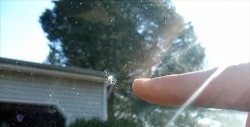
Simple, affordable car windshield chip repair

"Folk" means of combating fogging of car windows
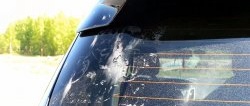
How to remove sticker marks on car glass in 1 minute

How to easily fix a dent on a car using boiling water and a plunger

How to cut a nail with a wood saw without damaging the teeth.
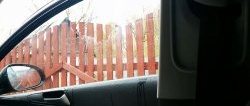
How to remove glue after removing tinting from car windows
Particularly interesting
Comments (1)

